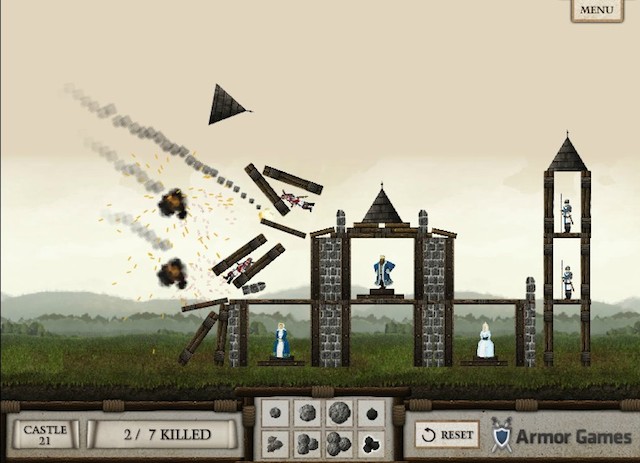

Civilization: Beyond Earth finally launches the Civ series back into space and into the future, a setting players haven’t experienced since the award-winning Sid Meier’s Alpha Centauri over 15 years ago. Like its ancestor, Civilization: Beyond Earth introduces exotic technologies and settings, this time built with the technology of Civilization V. The results for Beyond Earth are decent, but are not without a few question marks.
Beyond Earth takes the turn-based strategy series to an alien world, a direct link from the space-race victory condition of Civilization V. Many of the gameplay mechanics are the same as its predecessor, which creates a sense of familiarity. Firaxis clearly reached a comfort zone with Civilization V and made it a purpose to design Beyond Earth the exact same way, from the way resources (food, production, etc) are gathered, global statistics to monitor research and city health (replacing happiness), to combat rules of engagement.
Players new to the series or even turn-based strategy games will find the action easy to slip into, as an adviser is present to assist almost every player action in the game. The level of assistance offered can be modified at any time and effectively replaces any need for a tutorial for new players. It’s a great addition to guide all levels of players through the new elements of the series.
Firaxis makes some large, sweeping changes in Beyond Earth from previous installments. Gone are the unique and varied faction civilizations, this time replaced with broad, flavorless coalitions. Generally speaking, the only difference between these coalitions are one unique trait per leader, as well as a handful of pre-game choices that give your faction various bonuses, such as additional food production, an extra worker unit, or even the ability to see strategic resources like oil and titanium before researching the necessary technologies.
These bonuses attempt to create the sense of individuality for each faction, but by removing all uniqueness from each leader and forcing players to 100% customize their faction, the leaders and factions lack the same flavor as previous Civ games offered. Players are instead driven down certain “Affinity” paths which will shape their faction and the entire game for that matter.
While on the surface Affinity choices might appear to mimic the Ideology choices of Civilization V, they are somewhat different. There are three Affinities to choose from: Purity, Supremacy, and Harmony. Researching new technologies will occasionally align with a specific Affinity, which adds affinity points to your score for each category. As players further progress down each path, unique units, buildings, and wonders are made available for construction. This is where the game attempts to diversify its various factions and leaders from another, but considering there are only three branches to choose, invariably several AI or human players (in multiplayer) will be playing the game the exact same way as you, further removing individuality from the game. It is notable however, to recognize how important player choices are in shaping each faction, which is admirable of Firaxis to make this change in style.
Civilization: Beyond Earth’s questing system is a new and welcome addition to the series, causing random events to pop up and forcing players to make decisions. However, these are all beneficial and since the quests come up so frequently, and typically in a similar order from game to game, they end up being not very random or unique. We wouldn’t be surprised to see Firaxis reducing the number of random quest events and adding negative ones to better balance the game in an upcoming patch.
The old familiar linear tech tree has been replaced with welcomed new web design. Players start in the middle with a basic tech and research branches, or primary, technologies, and then two “leaf” techs which correspond to the parent tech. These “leaf” techs are where most of the Affinity points are earned. Future technologies are unfamiliar due to their exotic nature however, making the sci-fi units, buildings and improvements feel somewhat detached from the human player.
Considering Beyond Earth has been hailed as “the spiritual successor” to Alpha Centauri, there is a disappointing lack of unit customization, which was one of the hallmarks of Alpha Centauri. Units are automatically customized as you progress down the chosen affinity branch, awarding each unit with a few perks as well. Many of these perks were reserved for unit promotions in Civilization V. Unit promotions are also handled automatically, taking out the tedious task of manually upgrading units throughout the entire game.
The alien planet setting of Civilization: Beyond Earth is little more than a re-skinned version of whatever landmass you choose to play with in Civilization V. Grasslands, plains, hills, mountains, marshes, deserts, tundra, snow, ice, coasts, and ocean tiles all return. Occasionally the planet may have a different hue for these tiles (I played one game where the grasslands looked like blue fungus), and it does add a nice touch of randomness to the game, but it can create confusion. Native flora and fauna are difficult to identify at first, and when considering potential settlement areas, it is not always intuitive. Dangerous clouds of miasma (which hurts your units) dot the landscape, though it remains more of a nuisance than an actual problem (unlike fungus in Alpha Centauri).
The native life on the planet is not intelligent but can be hostile to your forces. The aliens of Beyond Earth essentially take the place of the barbarians of Civilization V, but they can launch attacks at your faction or leave you alone. There’s oddly no visible global meter to measure their hostility, and even when pursuing the “Harmony” affinity, the aliens sometimes still wreck havoc on your civilization regardless of your actions.Playing as all three styles multiple times, it became easier simply kill them all with no real benefit to keeping them alive, especially the insanely over-powered alien naval units, which makes that aspect of the game shallow.
Where Civilization: Beyond Earth really falls behind on is the visuals. The graphics of the alien world appear cartoonish and dated, not enough of a step forward from previous entries. There are a few new design elements, such as impassable canyons and water-filled craters, but for the most part, the landscape acts the same as Earth landscapes (such as various tile bonuses for units) only with a different color palette.
While Civilization: Beyond Earth gets some core elements right and is mechanically sound, having previously spent 1,606 hours over four years playing Civilization V and now 21 hours playing Beyond Earth, the two play almost identical. And because of that it feels as if its DLC or a well-done mod and not so much the true “spiritual successor to Alpha Centauri.” Instead, Firaxis has constructed a solid but somewhat underwhelming upgrade for a game released four year ago.
Civilization: Beyond Earth releases October 24, 2014 for PC, Mac and Linux.
Follow Matt on Twitter @mattrowland1




 A Microsoft Edge Review From A Die-Hard Chrome User
A Microsoft Edge Review From A Die-Hard Chrome User Ultimate Tips and Tricks To Survive Realistic Mode In Call of Duty: Black Ops III
Ultimate Tips and Tricks To Survive Realistic Mode In Call of Duty: Black Ops III Fallout 4 Guide: How To Find The Submarine
Fallout 4 Guide: How To Find The Submarine AC Syndicate: How to Find All Royal Letters (Correspondence) Locations
AC Syndicate: How to Find All Royal Letters (Correspondence) Locations 15 Cool Puzzle Games You Can Play Free in Your Browser
15 Cool Puzzle Games You Can Play Free in Your Browser